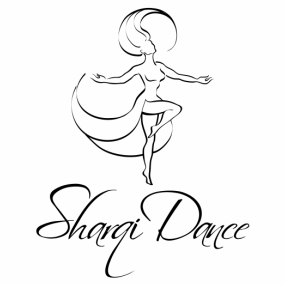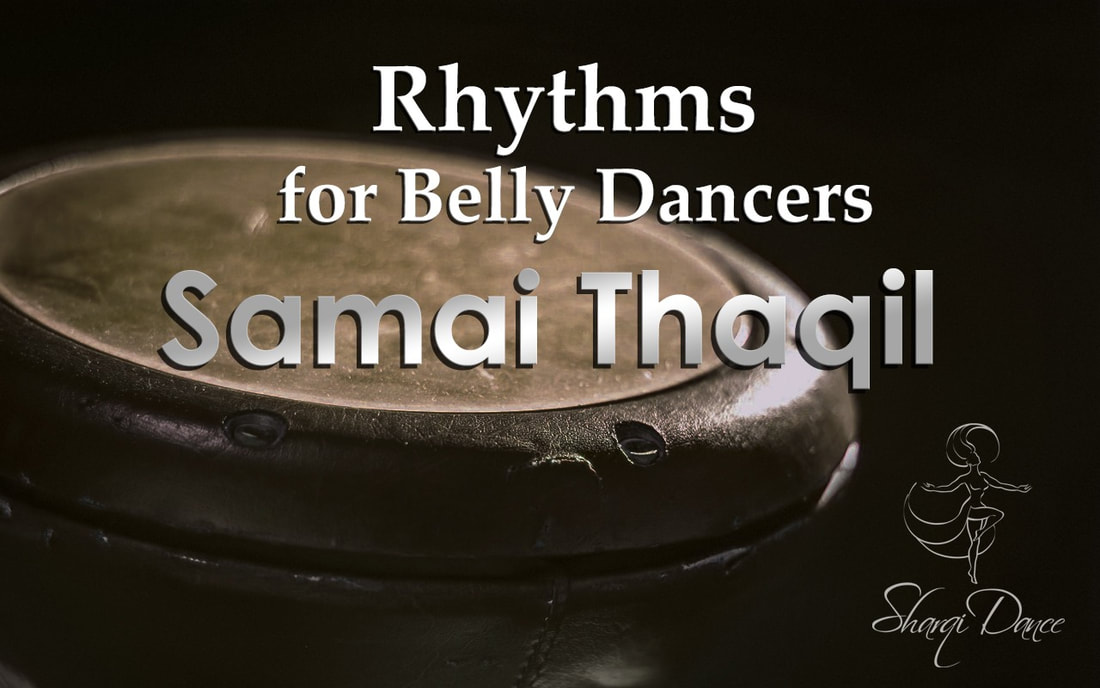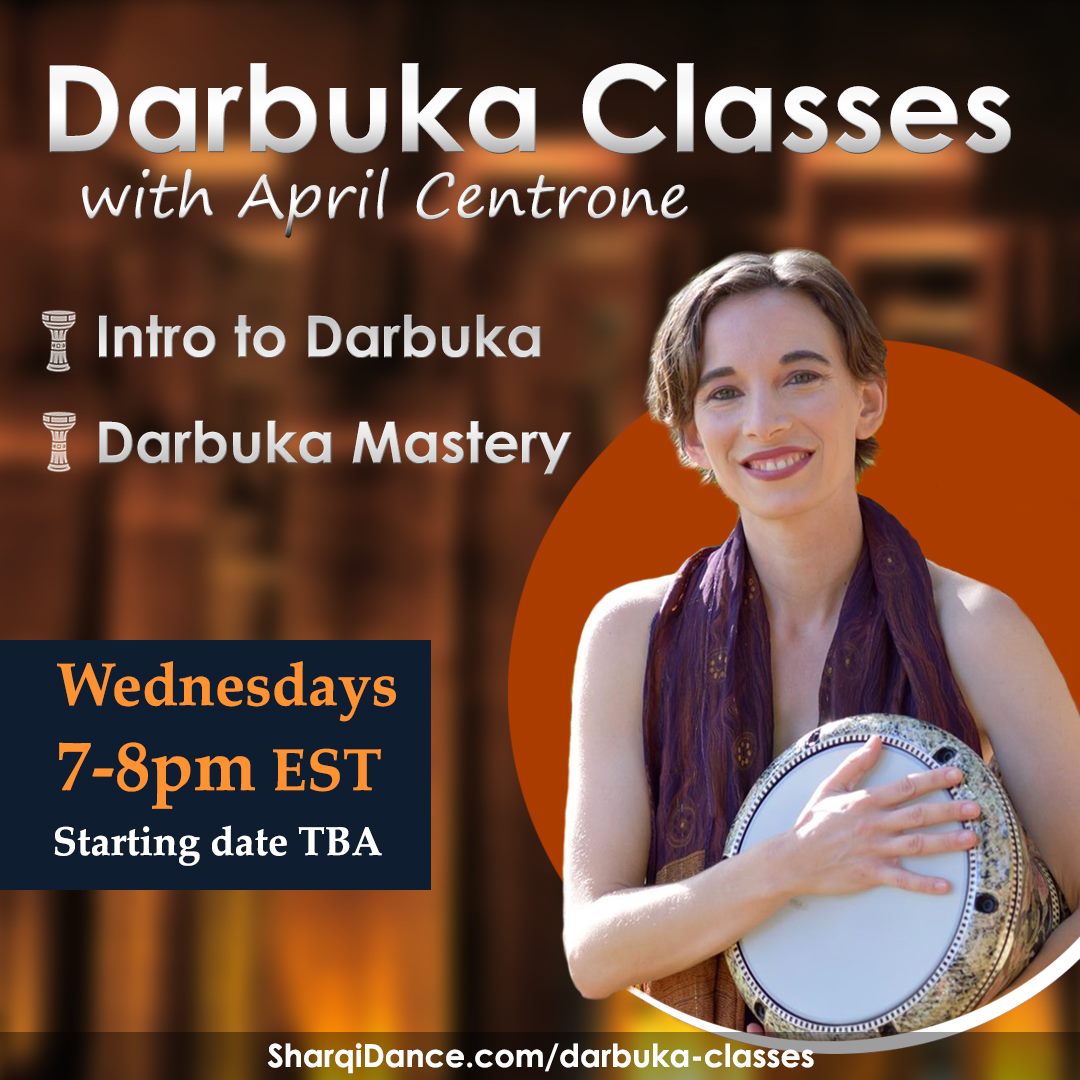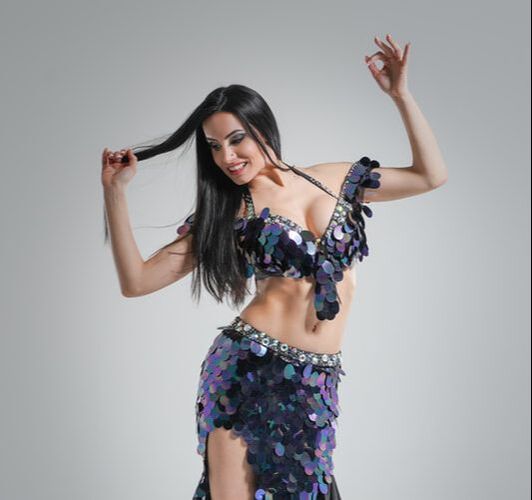|
Learn to identify, dance to, and appreciate the beautiful but strangely-timed rhythm Sama'i The Samai rhythm is a 10/8 rhythm that is fairly common in certain types of Middle Eastern music. The 10/8 variation of this rhythm is referred to in Arabic as Samai Thaqil (also spelled Sama'i Thaqil), and that's the variation we are discussing today. The rhythm Samai is not featured in most Middle Eastern songs we normally use for belly dance, but it is encountered often enough to be considered an essential rhythm for belly dancers to know. The "skeleton" of the 10/8 Samai sounds like this: D--T-DDT-- This is spread over a count of 10, meaning there are 10 beats to each measure. Here's where the main "doums" and "teks" will fall within the Samai rhythm: Depending on the drummer and context, you might hear some or all of the silent spaces between the main doums and teks get filled out with more "teks" and "kas," drum rolls and other flourishes, but the timing and the skeleton of the rhythm stays the same. Listen to the Sama'i Thaqil Where You Might Hear Samai Most commonly, you will hear Samai in muwashah music, which is a type of Arabic poetry in musical form that dates back to 10th century Moorish Spain (Al-Andalus). Among belly dancers, the most famous muwashah is Lamma Bada Yatathana. There are many versions of this song available today, but it dates all the way back to Andalusia in the Middle Ages, and was first recorded in 1910. My favorite 20th century rendition of Lamma Bada: Samai: Not Just for Muwashahat You will sometimes hear the Samai rhythm as a section within a Middle Eastern musical composition, usually in the following genres:
The sama'i rhythm starts at 2:55 How Do We Dance to That? How you should dance to this rhythm will depend on the context such as the music it's found in, what the accompanying instruments are doing, and of course, your own personal preference and interpretation. For example, in muwashahat or in a more classical piece, the music might call for traveling steps such as arabesques and sweeping, ballet-like arm movements and leg lines. The energy is calm, soft, flowy and regal. Hip movements would be subtle and used sparingly, if at all. Watch Haleh Adhami's gorgeous interpretation of Sama'i in muwashah style In a drum solo, you can opt for the same types of movements and feeling as well, but if the solo tabla is dominating the base rhythm with a lot of accents, drum rolls and flourishes, you may opt to interpret those instead, and in that case fast, sharp hip movements could be appropriate. So context is definitely important! Was this post helpful? Would you like to learn more about Middle Eastern music and dance? Hit "like" below and leave a comment with your feedback! You can also visit our blog map to find more posts like this, or subscribe to our newsletter, YouTube channel, or Facebook page to be the first to find out about our next post. Happy learning, and happy dancing! You can learn how to dance to this and other Middle Eastern rhythms in my Belly Dance Rhythms & Combos online class, or learn how to play them in April's Darbuka Classes online.
1 Comment
What sets your blog apart is your genuine authenticity. Your passion for your subject matter shines through in every word, making it easy for readers like myself to connect with your message on a personal level. It's refreshing to encounter a writer who isn't afraid to be vulnerable and share their own experiences.
Reply
Leave a Reply. |
AuthorYamê is a Brazilian-American View Posts By CategoryIf you'd like to read more articles by Yamê or SharqiDance's guest authors, please view our blog map here.
Archives
January 2024
|






 RSS Feed
RSS Feed